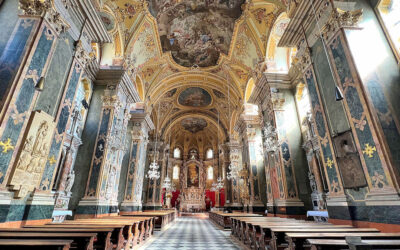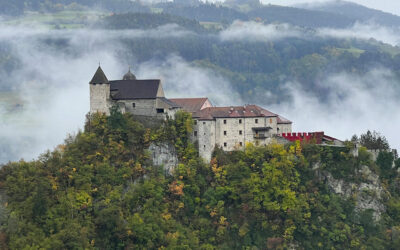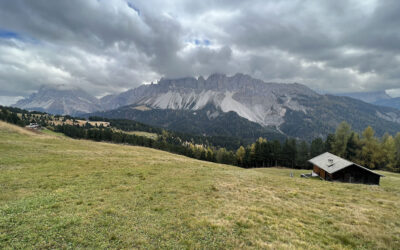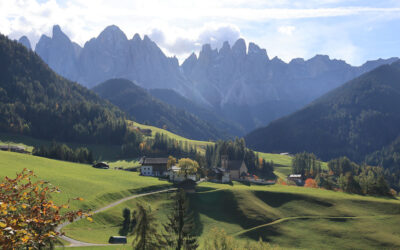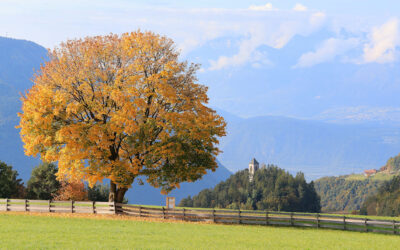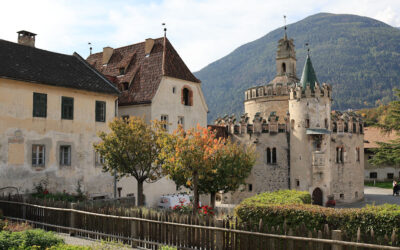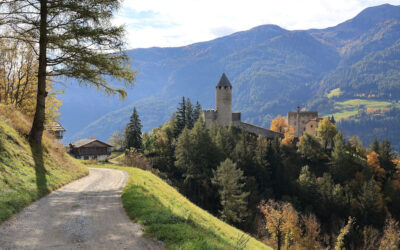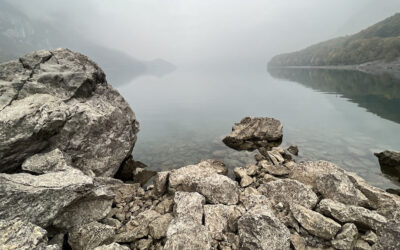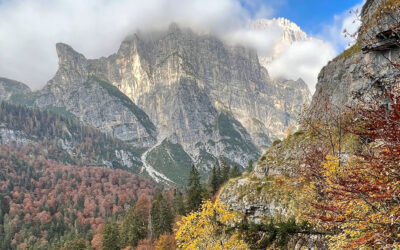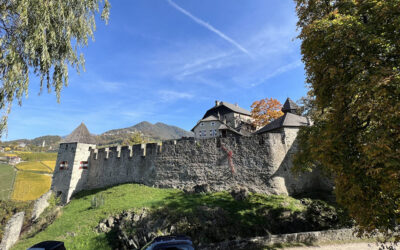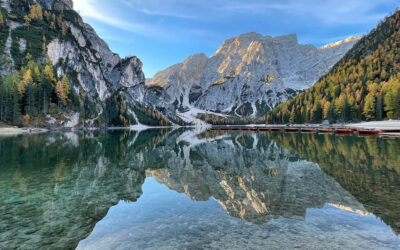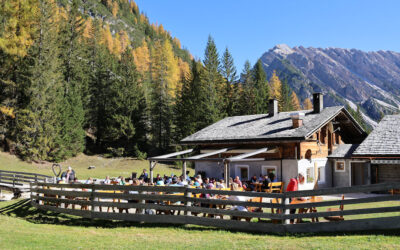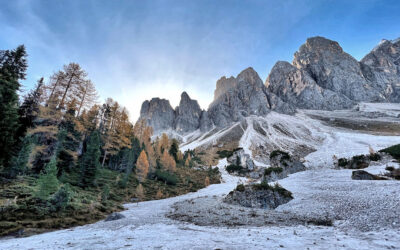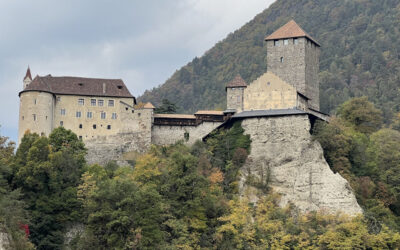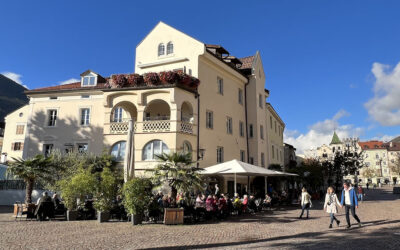Brixen
October 8 - 23, 2022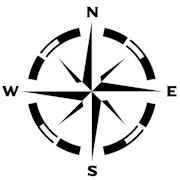
Brixen : An Ancient Gem
 Cindy and I spent the last two weeks of our month-long Italian odyssey based in the lovely and historic city of Brixen, also known as Bressanone in Italian or Porsenù in Ladin. Brixen is located at the confluence of the Isarco and Rienz Rivers, twenty-five miles northeast of Bolzano and about that same distance south of the Brenner Pass, i.e. the Austrian border. The city sits on the floor of the Val Isarco at roughly 1,800 feet above sea level. It’s a dramatic location with the Plose and Monte Telegrafo mountains to the east and Monte Pascolo to the west, all three mountains topping out at 8,000 feet or higher.
Cindy and I spent the last two weeks of our month-long Italian odyssey based in the lovely and historic city of Brixen, also known as Bressanone in Italian or Porsenù in Ladin. Brixen is located at the confluence of the Isarco and Rienz Rivers, twenty-five miles northeast of Bolzano and about that same distance south of the Brenner Pass, i.e. the Austrian border. The city sits on the floor of the Val Isarco at roughly 1,800 feet above sea level. It’s a dramatic location with the Plose and Monte Telegrafo mountains to the east and Monte Pascolo to the west, all three mountains topping out at 8,000 feet or higher.
A population of around 23,000 makes Brixen the third largest city in the Südtirol, well behind the decidedly more urban capital city of Bolzano (pop. 108,000) and the elegant spa town of Merano (pop. 41,000). Over 70% of the residents in Brixen claim German as their primary language with 25% claiming Italian and the small remainder claiming Ladin. Welcome to the tri-lingual Südtirol!
 With a named settlement on record as far back as 901 AD, Brixen is the oldest town in the province. At its heart it remains a medieval town with the historic district surrounded by walls dating back to the end of the first millenium. Inside those walls are narrow streets, elegant shopping arcades, sacred buildings, and numerous museums all standing side-by-side with enough shops, cafes, and high-end restaurants to keep both locals and tourists amused.
With a named settlement on record as far back as 901 AD, Brixen is the oldest town in the province. At its heart it remains a medieval town with the historic district surrounded by walls dating back to the end of the first millenium. Inside those walls are narrow streets, elegant shopping arcades, sacred buildings, and numerous museums all standing side-by-side with enough shops, cafes, and high-end restaurants to keep both locals and tourists amused.
As you might expect one of the highlights of Brixen is the main cathedral, known as Dom zu Brixen in German or Duomo di Bressanone in Italian. The cathedral has a long history dating back to 980 AD but that fire-prone wooden structure was eventually re-built with stone around the year 1200 in the Romanesque style. That church was subsequently replaced with the current and quite extravagant Baroque structure between 1745 and 1754. No fewer than 33 types of marble were used in the construction of this ‘new’ church.
 Continuing with the religious theme, another popular local attraction is the Novacella Abbey, an Augustinian convent dating back to 1142. Located just north of Brixen and within easy walking distance, the compound includes a baroque church, a Gothic cloister, a large library, and a wine cellar that serves wines produced in the abbey’s own vineyards. Their white wines include local specialties like Sylvaner, Kerner, and Gewürztraminer along with more common varieties like Riesling, Sauvignon, and Pinot Grigio. Their distinctively local red wines include Schiava, Santa Maddalena, Lagrein, and Pinot Nero.
Continuing with the religious theme, another popular local attraction is the Novacella Abbey, an Augustinian convent dating back to 1142. Located just north of Brixen and within easy walking distance, the compound includes a baroque church, a Gothic cloister, a large library, and a wine cellar that serves wines produced in the abbey’s own vineyards. Their white wines include local specialties like Sylvaner, Kerner, and Gewürztraminer along with more common varieties like Riesling, Sauvignon, and Pinot Grigio. Their distinctively local red wines include Schiava, Santa Maddalena, Lagrein, and Pinot Nero.
Did I mention that Brixen has a pharmacy museum? No wonder Cindy agreed to stay here! The Pharmaziemuseum Brixen displays a large collection of antique drug manufacturing and dispensing devices. These artifacts were collected and donated by a family of pharmacists that has been operating in the museum building for over 400 years. If walls could talk!
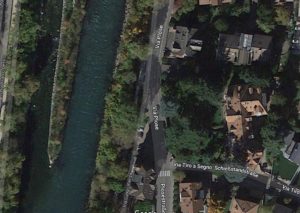 It was an easy one hour bus ride from Ortisei’s Antoniusplatz to the main Bahnhof in Brixen. From there we took a pleasant stroll down the Via Mozart to our lodging, a newly-renovated two bedroom apartment with balcony in a lovely older building next to the Isarco River. We were just across the river and a couple of blocks from both the traditional old town and the even older (and quite trendy) Stufels district. This put us close to everything that Brixen had to offer, but not too close. The building was sheltered by a walled lawn with large trees that created a very quiet oasis. It was also just a short walk from a new, modern EuroSpar grocery store so provisioning our apartment was never a problem.
It was an easy one hour bus ride from Ortisei’s Antoniusplatz to the main Bahnhof in Brixen. From there we took a pleasant stroll down the Via Mozart to our lodging, a newly-renovated two bedroom apartment with balcony in a lovely older building next to the Isarco River. We were just across the river and a couple of blocks from both the traditional old town and the even older (and quite trendy) Stufels district. This put us close to everything that Brixen had to offer, but not too close. The building was sheltered by a walled lawn with large trees that created a very quiet oasis. It was also just a short walk from a new, modern EuroSpar grocery store so provisioning our apartment was never a problem.
Two of the reasons that we chose Brixen were the central location and the excellent rail/bus connectivity. This was important to us because one of our goals for this two week stay in Brixen was a detailed exploration of the southern and western parts of the Südtirol. We knew that our visit was going to be rather late in the summer season so we expected colder weather and maybe even some snow moving into the higher elevations as late October rolled around. We thought that it was worth the risk because the advantages of late season travel in Südtirol are the greatly diminished crowds and the wonderful fall colors! We’d highly recommend Brixen as a home base for anyone wanting to get a first real taste of the Dolomites. It’s easy to get there, the weather is great, and there’s no problem staying busy. Be sure to read our blog below for more details about our adventures in this area!
Our Blog For Brixen
Day 1 – Walking Brixen’s Old Town
Today Cindy and I left Ortisei and moved to Brixen. It wasn’t a big move on the map but it was a big change in other ways.
Day 2 – The Chestnut Trail From Chiusa
It was a rainy day for a long walk from Chiusa up to the Säben Abbey and then along the scenic Chestnut Trail back to Brixen.
Day 3 – Hiking Around The Plose Summit
If there’s a ski resort nearby Cindy and I will check it out – in this case we visited the Plose, a mountain just east of Brixen.
Day 4 – The Churches of Val di Funes
It was a sunny start for our visit to the Val di Funes, home to the Chiesa di Santa Maddalena and Chiesetta di San Giovanni.
Day 5 – Oberbozen & The Ritten Plateau
Our exploration of the Ritten Plateau started with a scenic cable car ride up from the Südtirol’s bustling capital city of Bolzano.
Day 6 – A Visit To The Neustift Monastery
The town of Varna, north of Brixen, is home to the ancient Neustift Monastery and the much newer Hubenbauer Hofbrauerei.
Day 7 – A Trip North To Vipiteno
Today we explored some new territory near the Austrian border with a mostly wooded hike from Campo di Trens to Vipiteno.
Day 8 – A Shore Thing In Lago di Molveno
Sometimes you need a vacation from your vacation, so today we headed south to Lago di Molveno for an impromptu getaway.
Day 9 – The Rifugio Croz dell’Altissimo
In the morning the weather cleared for a sunny hike from our rifugio to the very remote Rifugio Croz dell’Altissimo.
Day 10 – A Hike From Laion to Gudon
Today was a tale of three beautiful valleys – we took an easy hike from the Val Gardena along the Val Isarco to the Val di Funes.
Day 11 – The Kronplatz & Lago di Braies
Today’s adventure included an easy hike around the Kronplatz ski resort and an overnight stay at the Hotel Lago di Braies.
Day 12 – Lago di Braies & Malga Grünwald
Our adventure at the Hotel Lago di Braies continued with a memorable sunrise over the lake and a hike to a nearby rifugio.
Day 13 – A Walk On The Adolf Munkel Weg
Today we hiked the upper part of the Val di Funes for a bold view of the Odles group and a wonderful lunch in the sunshine.
Day 14 – A Visit To Merano & Tirolo
Our destinations for today were the chic, tourist-filled spa town of Merano and the beautifully restored Castel Tirolo.
Day 15 – A Quiet Day At Home In Brixen
We had a quiet day preparing for the trip home but we did venture out for one last wood-fired pizza and some homemade gelato.
Useful Links For Brixen
General Information :: Wikipedia
Weather :: weather.com
Official Website :: Brixen|Bressanone
Tourist Office :: Dolomites.org
Travel Planning :: Trip Advisor
Lodging :: Airbnb / VRBO
Train Information :: Bahn.com / Trenitalia.com
Regional Transit Information :: Südtirolmobil

